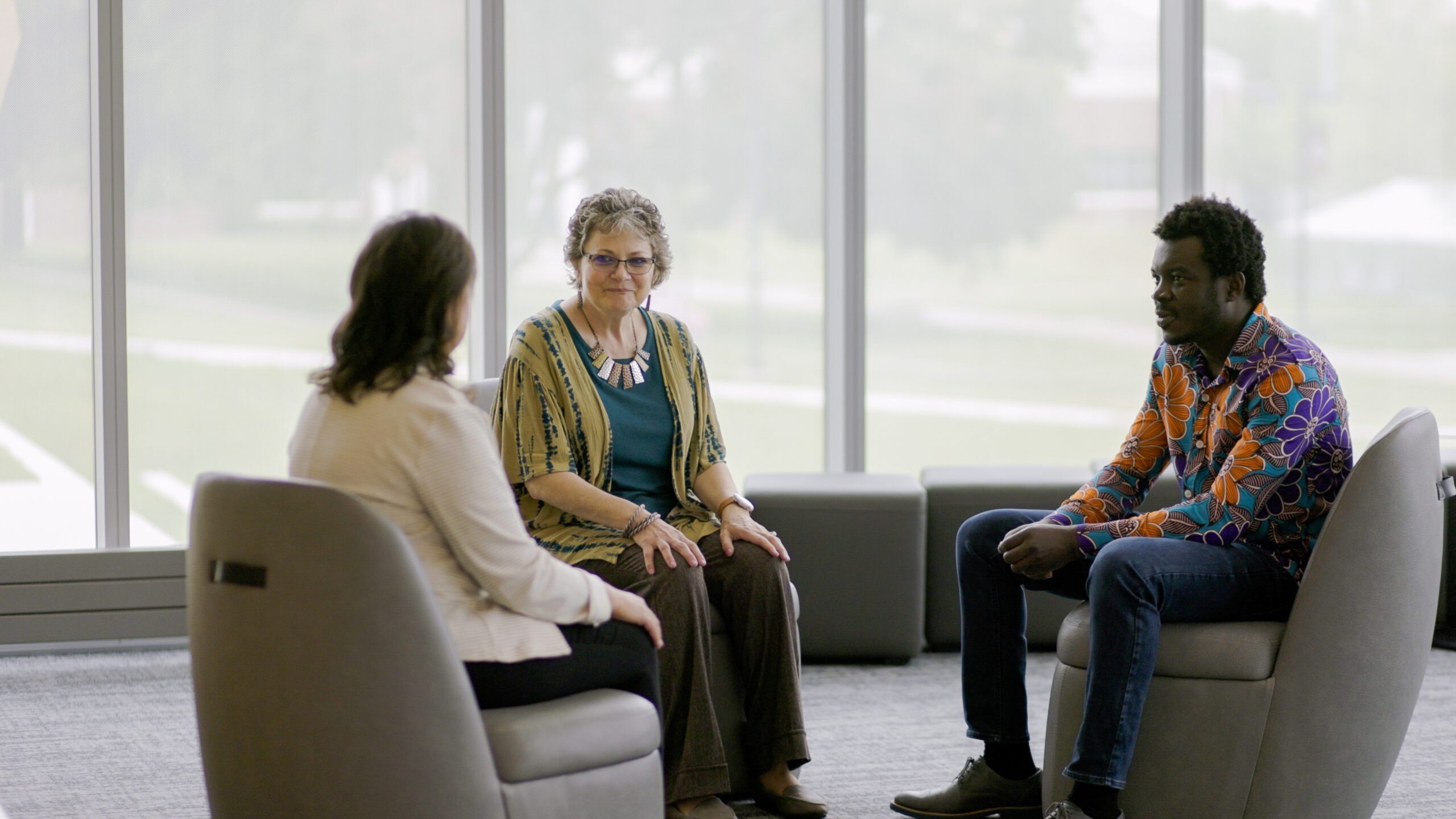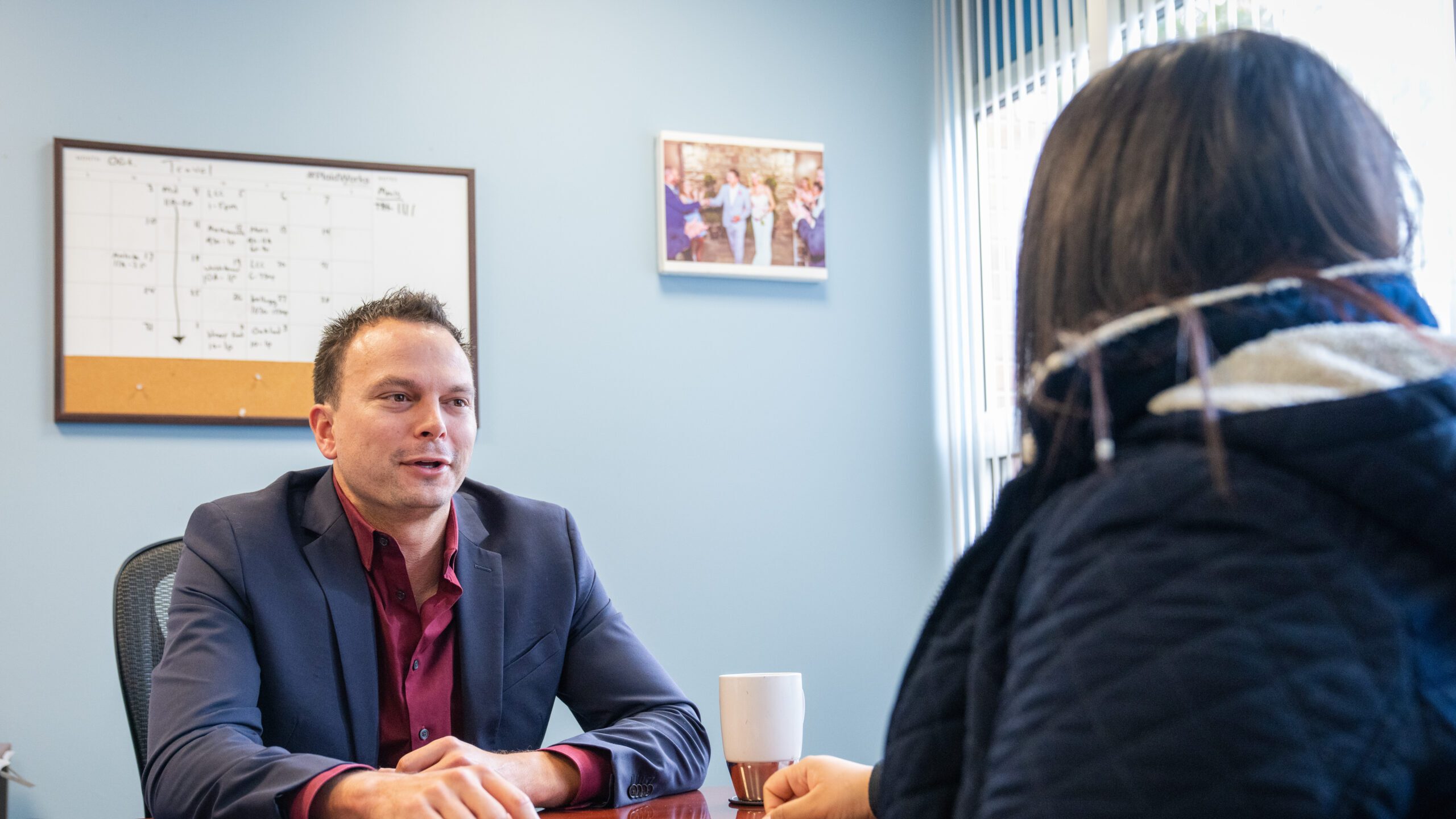Departments work together to welcome a growing group of incoming students
Thanks to coordinated efforts across multiple campus departments, transferring to Alma College from another college or university has never been easier — or more prevalent.
Transfer students today maximize their credits from other institutions, are able to find a living situation that meets their needs and discover a network of support much more effectively than they did in years past.
The proof is in the numbers: Alma College welcomed 30 transfer students in the Fall Term of 2022, compared to 15 transfer students in the Fall Term of 2008. And more growth in the area is expected.
“Transfer students have unique needs. They come in with a different range of experiences than a typical first-year student, but it’s important to meet every student where they’re at,” said Shelly Buschle, Alma’s senior director of recruitment.
“I think what we’ve tried to be much more intentional about is to make transfer students feel welcome here. We don’t simply say, ‘You can come here.’ We say, ‘We want you here, and when you’re here, we’re going to do all we can to help you succeed.'”
Among the policy changes in recent years that have made the transfer process easier is that transfer students do not have to live on campus. This allows students with preestablished living situations to commute to Alma, Buschle said.
Transfer credit policies have also been amended to be more student-friendly. It used to be the case that students transferring to Alma were required to take a First-Year Seminar (FYS) course. But now, Buschle said, as long as students come to Alma with more than 25 credits from a previous institution, they no longer have to take an FYS course.
Organizations like the Transition Assistance Program (TAP) provide transfer students with direct access to financial counseling, academic advising and career development, among other forms of assistance. The Transfer Living Learning Community offers a residency-based academic support program for any transfer student who needs it.
Finally, recruitment of transfer students has become much more intentional in recent years. Admissions representatives now specifically schedule time to visit community colleges, whereas in previous years they focused more on high schools.
When Finlandia University, in Michigan’s Upper Peninsula, announced plans to close in 2023, Alma was ready with scholarships and support for Finlandia’s students. The success of these efforts has been reflected in the experiences of transfer students at Alma.
De’Quan Powell, who is now a senior at Alma, came to the college after earning an associate’s degree at Macomb (Mich.) Community College. He said he largely made the move in order to play for the Scots’ basketball team, and study with its excellent faculty in his chosen field, which is business.
“I’m going to be able to graduate after only two years at Alma because I didn’t waste any credits,” Powell said. “It saved a lot of money for me to go to community college before I came here and it prepared me well academically.”
Samuel Bjordahl, a member of the graduating class of 2023, decided after his first year at a small college in Pennsylvania that it wasn’t a good fit for him.
Alma’s psychology and neuroscience programs were a better match for Bjordahl’s career ambitions and he didn’t lose a single credit he had previously earned when he made the move.
“I really think Alma has a lot of qualities that help transfer students in unique ways,” Bjordahl said. “The academic programs I’m in are very flexible and the transfer adviser I had worked with me through every step of the process.”
Outside organizations recognize the effectiveness of Alma’s transfer policies as well. In 2022, the college was named to the Phi Theta Kappa Honor Society (PTK) 2022 Transfer Honor Roll, which “recognizes the development and support of pathways created for the success of community college transfer students.”




